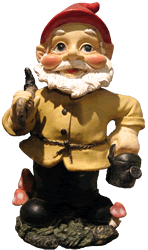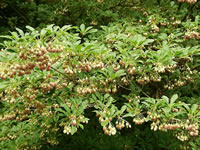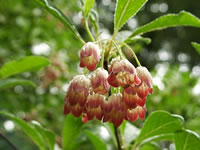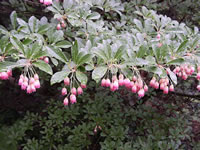How to Grow and Care for a Redvein Enkianthus
Enkianthus campanulatus
         
|
There are about 10 species of Enkianthus.
Enkianthus are deer resistant, deciduous shrubs known for their small, densely clustered, lightly scented bell shaped flowers that appear in late spring
and the layered effect of their small, stiff, bluish-green leaves.
In the fall, the foliage turns to shades of yellow, orange or red.
The most popular species, the Redvein Enkianthus is hardy in USDA planting zones 6-9.
Growing Requirements for Redvein Enkianthus
Redvein Enkianthus are slow growing shrubs that will eventually reach ten feet tall and wide.
Enkianthus enjoy most of the same conditions required for Rhododendrons and Azaleas.
They should be grown in continuously moist, compost rich, well draining, slightly acidic soil with peat moss or ground bark added.
Plant your Enkianthus in an area where they will receive partial shade to full sun.
After blooming, apply a good all-purpose fertilizer, following label directions. |

|
|
|
|
Pruning is generally undesirable because it will disrupt the 'layered' look of the foliage, and the display of pretty, clustering sprays of flowers will become far less prominent.
Only dead wood and broken branches should be trimmed off.
Once established, Enkianthus are fairly disease and insect resistant shrubs.
Propagating Redvein Enkianthus Plants
The small, winged seeds of Enkianthus plants can be sown directly in the garden in late winter or early in the spring.
Softwood or semi-hardwood cuttings can be struck in late summer.
Lower branches can be layered by pinning the tips to the ground in late fall. |
Redvein Enkianthus
Enkianthus campanulatus
 |
 |
 |
|
|
|
Search The Garden Helper: